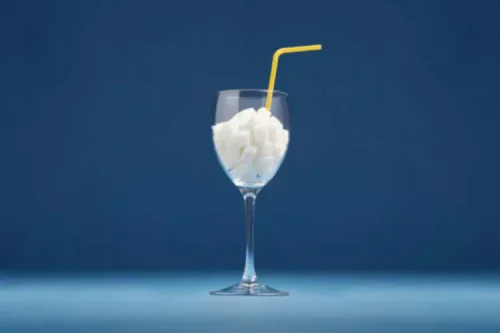
In some people, the initial reaction may feel like an increase in energy. But as you continue to drink, you become drowsy and have less control over your actions. Alcohol use disorder can include periods of being drunk (alcohol intoxication) and symptoms of withdrawal.
- Moreover, alcohol weakens the immune system over time, making the body more susceptible to infections and impairing its ability to fight illnesses.
- Treatment options available for people struggling with alcohol abuse and alcoholism may vary depending on the needs of the patient and their preferences.
- To avoid these tendencies, try to drink alcohol in moderation—or not at all.
- It’s important to note that the presence of these risk factors does not necessarily mean a person will develop alcoholism, but they can contribute to the likelihood.
- For instance, you may start drinking so much that you black out (lose consciousness).
Physical and Psychological Consequences of Alcohol Abuse
- Mental health professionals use it nationwide to categorize and diagnose individuals seeking treatment.
- An episode of binge drinking can bring your blood alcohol content (BAC) to dangerous, even life-threatening levels.
- Yet they continue to drink despite these consequences, which can lead to long-term issues with their physical or mental health.
- However, even a mild disorder can escalate and lead to serious problems, so early treatment is important.
After World War I, the Army and Veterans Administration broadened the nomenclature to include disorders affecting veterans. The Diagnostic and Statistical Manual of Mental Disorders (DSM) initially developed out of a need to collect statistical information about mental disorders in the United States. The first attempt to collect information on mental health began in the 1840 census. By the 1880 census, the Bureau of the Census had developed seven categories of mental illness.
Signs of Alcohol Abuse
Daily drinking can have serious consequences for a person’s health, both in the short- and long-term. Many of the effects of drinking every day can be reversed through early intervention. With more than 15,000 treatment centers in the United States alone, there are a variety of options for those living with alcoholism, from alcohol detox to online rehabs and teletherapy. Finding a community of your peers who are also trying to get sober can help provide support during early recovery. Alcohol use disorder is a diagnosis used by medical professionals to describe someone with an alcohol problem to varying degrees. Alcoholism is a non-medical term used most often in everyday language and within the rooms of Alcoholics Anonymous.
Why Is Medication for AUD Underutilized?
For more information on the effects of alcohol on the body, visit the National Institute on Alcohol Abuse and Alcoholism website. Physically, alcohol abuse can cause heart, liver, and pancreas problems, including inflammations like pancreatitis. The liver, responsible for metabolizing alcohol, can suffer from diseases such as cirrhosis, with nearly half of liver disease deaths involving alcohol. The pancreas may produce toxic substances under the influence of alcohol, impairing its function and leading to digestive issues. Understanding the risk factors, such as genetics, environmental influences, and the age at which one starts drinking, is crucial for prevention and treatment.
Our writers include physicians, pharmacists, and registered nurses with firsthand clinical experience. All condition, treatment and wellness content is medically reviewed by at least one medical professional ensuring the most accurate information possible. It is important to note that treatment effectiveness can be influenced by factors such as the severity of alcohol use, the presence of co-occurring disorders, and the individual’s socio-economic status.
Alcohol use disorder (AUD), formerly known as alcoholism and alcohol addiction, describes a long-term pattern of alcohol use that becomes difficult to control. You might, for instance, feel an urge to drink even when you no longer want to, and have cravings when you try to avoid alcohol. In short, your relationship with alcohol may have started to disrupt your daily life and activities.
Alcoholic Tendencies and How to Avoid Them
- If you want to cut back on your drinking — or quit drinking alcohol altogether — you have plenty of options.
- In some people, the initial reaction may feel like an increase in energy.
- While this may be a difficult conversation, they can provide further testing to determine whether you need professional help for alcohol and drugs.
This health condition is what’s responsible for a person experiencing alcohol withdrawal. A person with alcoholism may drink every day, multiple times a day, may start their day with alcohol, end it with alcohol, and may not be able to go a day without drinking. Binge drinking is a pattern of alcohol abuse in which a person quickly consumes a lot of alcohol. Alcoholism, medically known as alcohol use disorder (AUD), occurs when a person has formed a mental reliance on (addiction to) and/or a chemical dependency on alcohol.
Alcohol Abuse vs Alcoholism: What Sets Them Apart?

If you or a loved one are struggling with alcohol use, it’s helpful to understand the differences between terminology like alcoholism and AUD. Knowing the difference between AUD and alcoholism can help you find the right treatment for a successful recovery. Alcohol use disorder (AUD) is now the clinically accepted term used by doctors and mental health professionals. You don’t need to have every one of these signs to have alcohol poisoning. It affects people differently but can become life-threatening very quickly.

CBT helps you modify your thoughts and actions, while also learning alternative coping mechanisms. AUD refers to what is colloquially known as alcoholism, which is a term that the DSM-5 no longer uses. Our free email newsletter offers guidance from top addiction specialists, inspiring sobriety stories, and practical recovery tips to help you or a loved one keep coming distinguish between alcohol abuse and alcoholism back and staying sober. While this may be a difficult conversation, they can provide further testing to determine whether you need professional help for alcohol and drugs. An alcohol assessment will give you a quick idea of whether you or your loved one should seek help. However, if abuse has become a dangerous pattern, a person may need more intensive treatment.
Alcohol Use Disorder Stages
However, recent changes in gender dynamics may have caused this gap to narrow. Similarly, young individuals (18-29 age group) tend to have a higher prevalence of alcohol-related problems when compared to older adults. If you fall into this group, alcohol causes a dramatic shift in your personality. Although you usually feel shy or quiet when sober, alcohol makes you much more extroverted, like the life of the party. If you join this well-known group, which offers free meetings around the world, other members will guide you through AA’s 12 steps to recovery. The first step is accepting that it’s hard for you to control your drinking.

